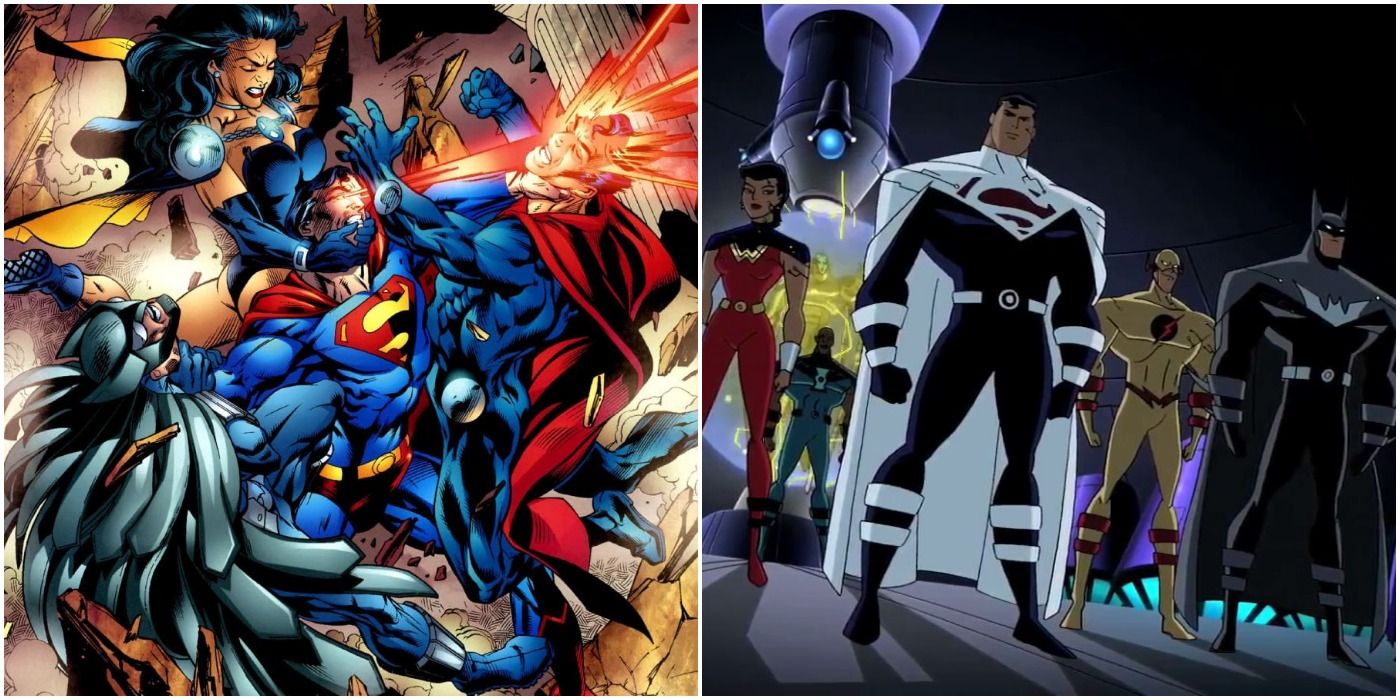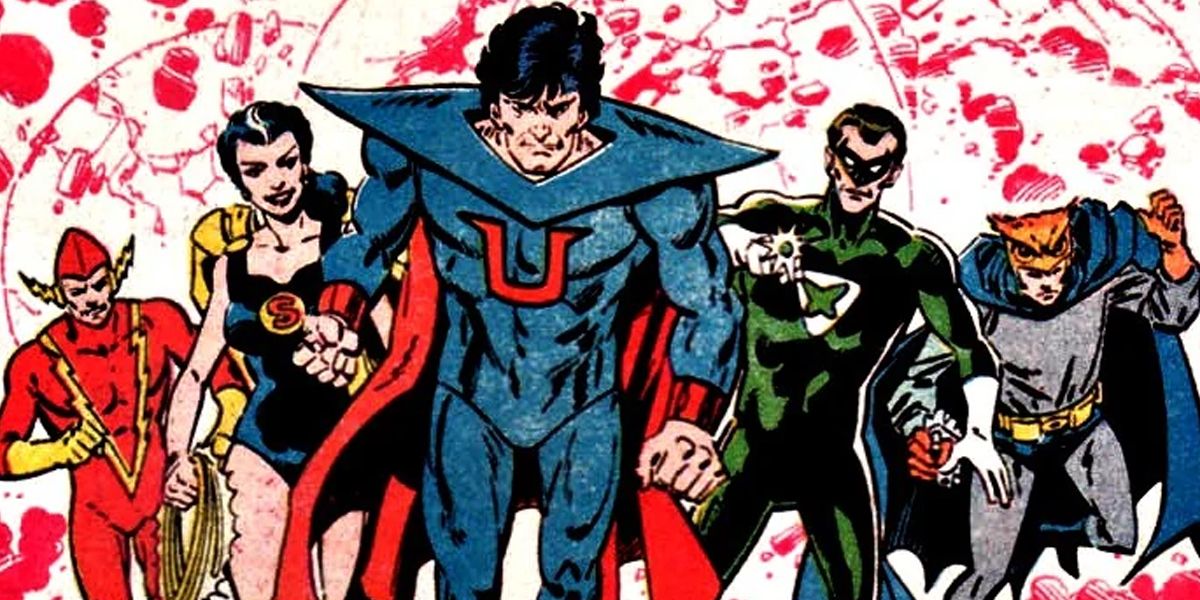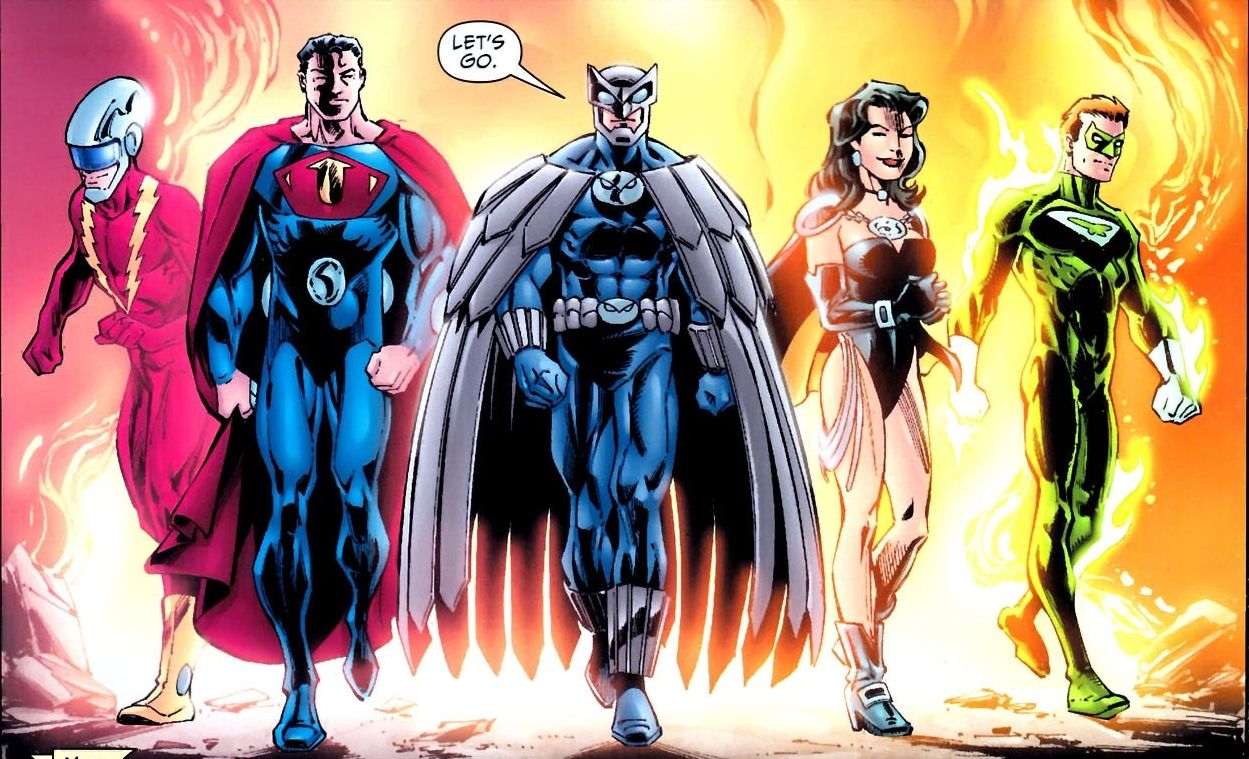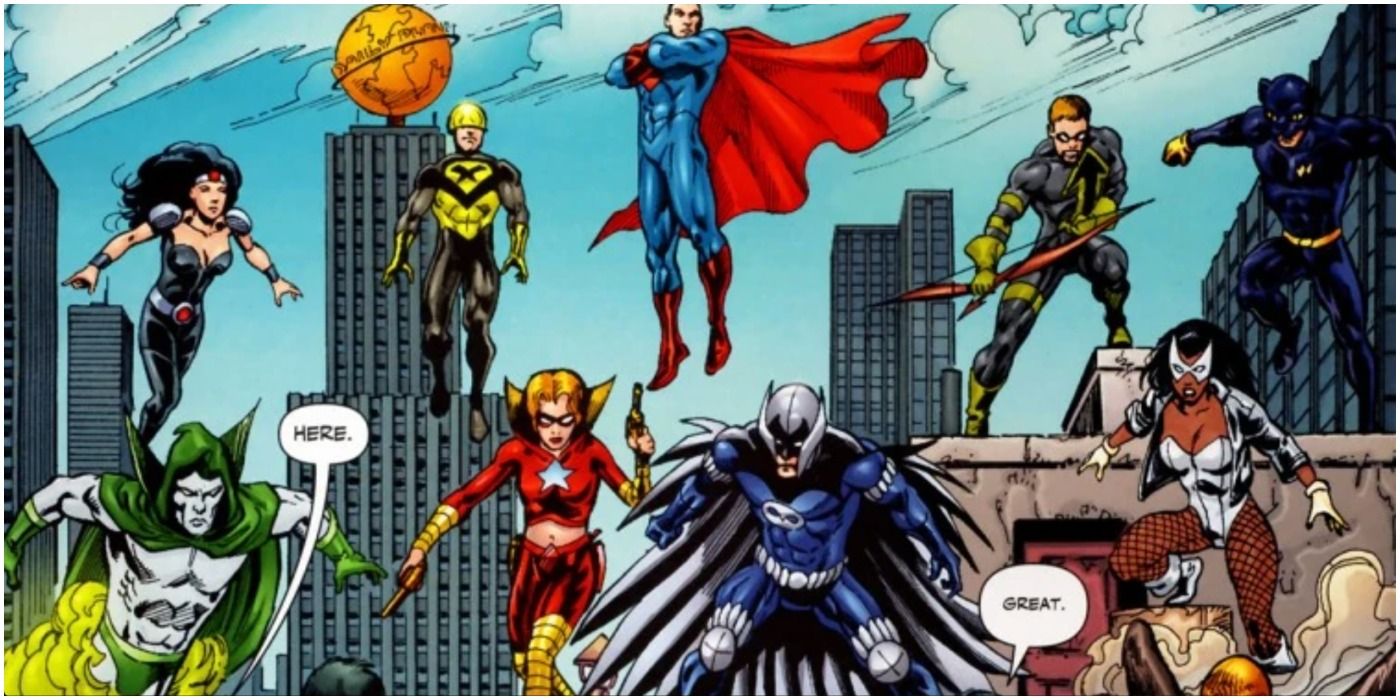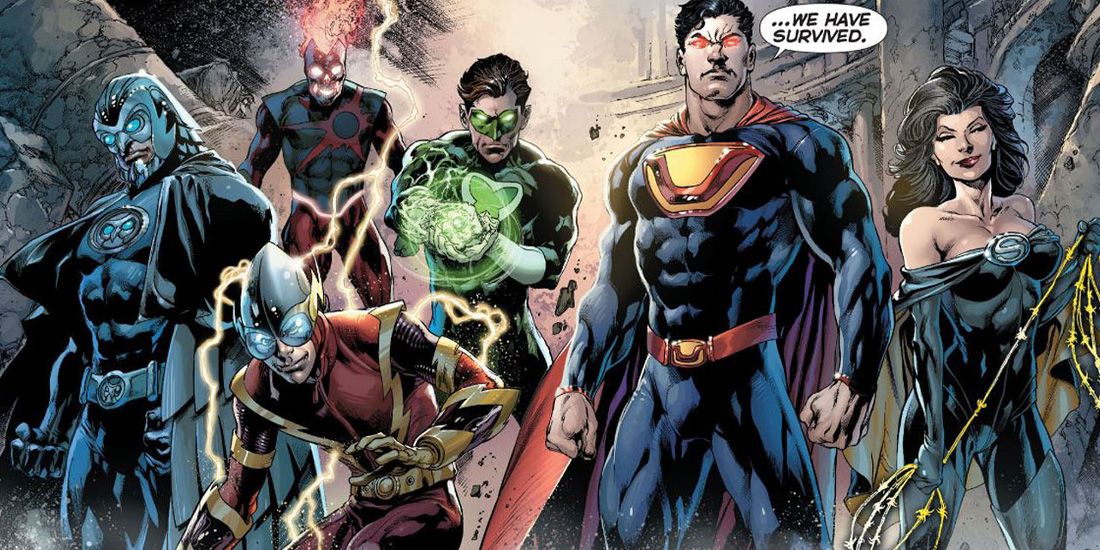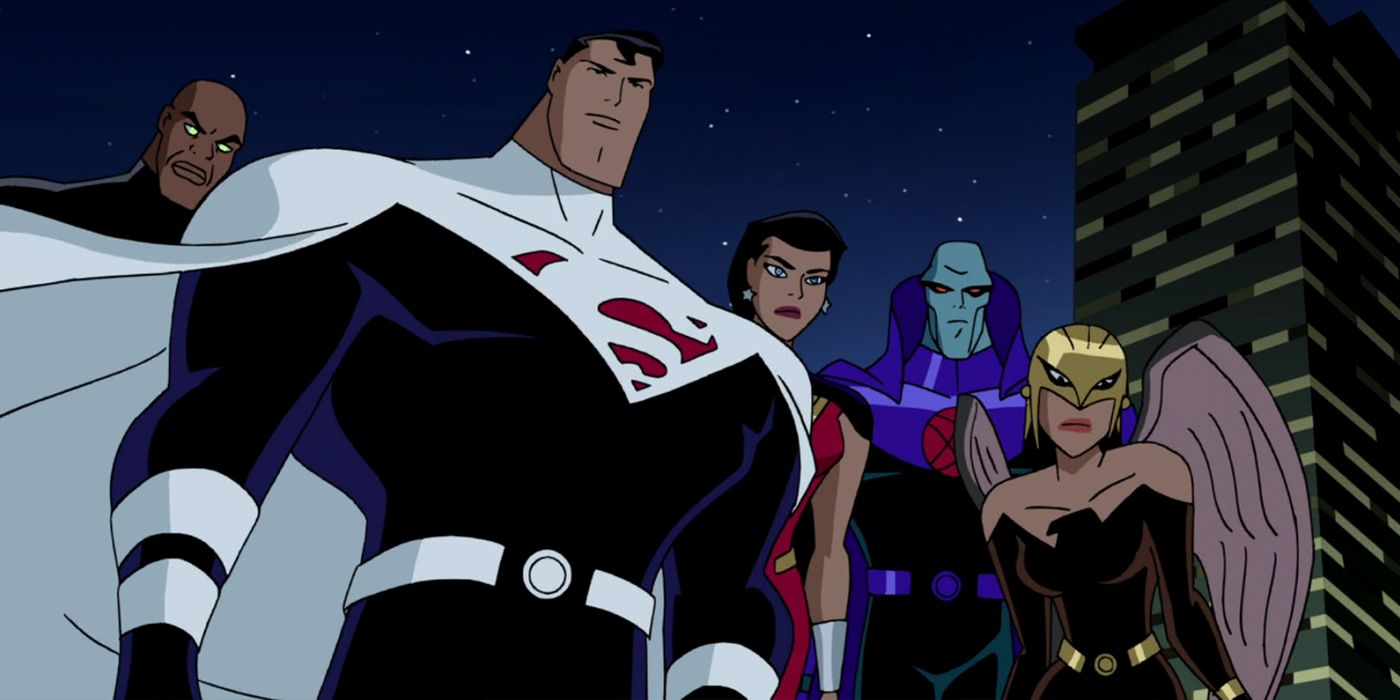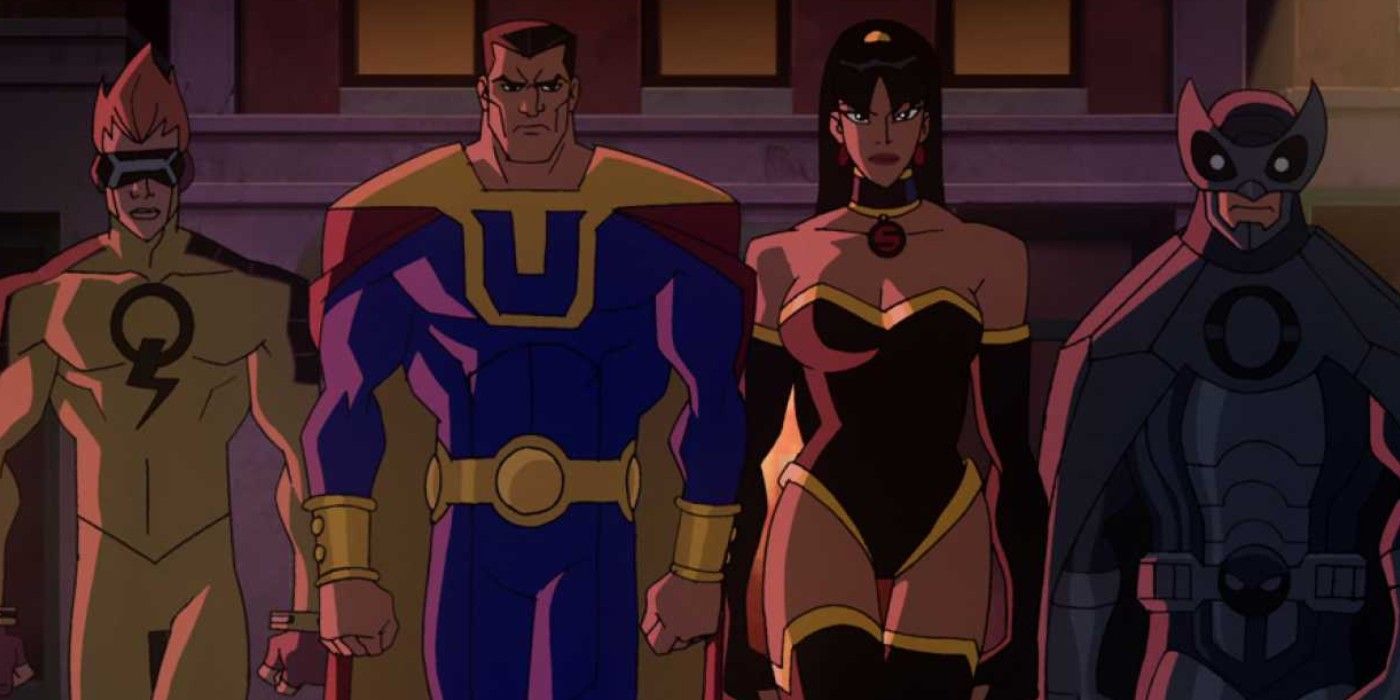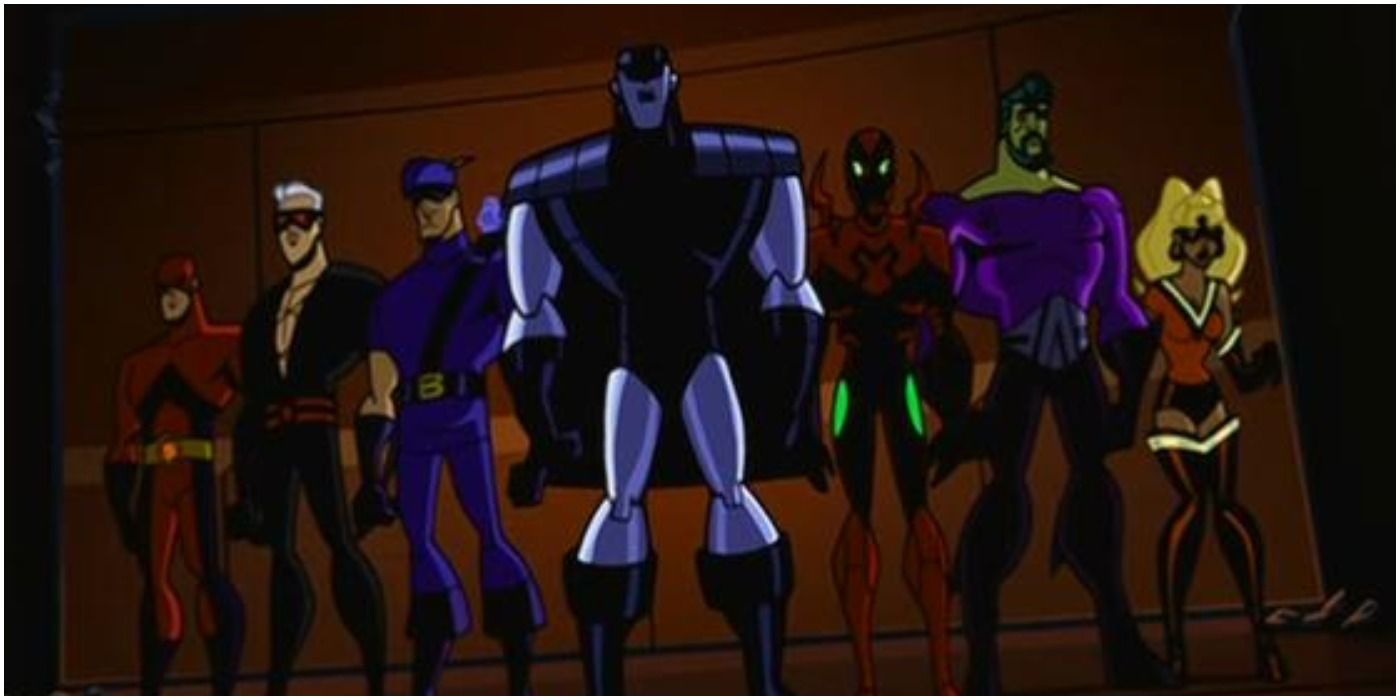The Multiverse has long been integral to the world of DC Comics. The concept first came to prominence in The Flash #123, "The Flash Of Two Worlds," when the adventures of the Golden Age Flash, Jay Garrick, were revealed to have taken place in a different reality (dubbed "Earth-2") than the one in which the Silver Age Flash, Barry Allen, dwelt ("Earth-1").
In Justice League Of America #29, the concept was expanded further by the introduction of the Crime Syndicate, whose native reality ("Earth-3") was morally inverted compared to Earth-1. Interestingly, this issue hit stands in 1964, three years ahead of the classic Star Trek episode "Mirror, Mirror," which is usually credited with introducing the idea of a "Mirror Universe" to science fiction.
Over DC's history, the Multiverse has been reimagined several times; reimagining the Multiverse results in new versions of the Crime Syndicate, as the concept is integral to the team's very existence. Let's look at the various versions of the Justice League's evil doppelgängers who've popped up over the years.
7 Silver Age
The original Crime Syndicate of America consisted of evil versions of Superman, Batman, Wonder Woman, The Flash, and Green Lantern. They were called Ultraman, Owlman, Superwoman, Johnny Quick, and Power Ring, respectively. This villainous quintet hailed from a world with an inverted history to Earth-1's. For example, Britain was a colony of America that fought a war for independence against the forces of King George Washington, President John Wilkes Booth was assassinated by Abraham Lincoln, etc..
With the CSA unchecked by anyone except their world's only superhero, Alexander Luthor, they had conquered the planet. Bereft of challenges and consequently bored, the CSA crossed over to Earth-1 and defeated the Justice League, before deciding to test their mettle against Earth-2's Justice Society. This ultimately leads to the two heroic teams defeating and imprisoning the CSA in a pocket between dimensions. The CSA would occasionally return from then on, either individually or as a group, until they (and their native dimension) were destroyed in Crisis On Infinite Earths.
6 "JLA: Earth-2"
Grant Morrison and Frank Quitely's JLA graphic novel, Earth-2, reintroduced and reinvented the Crime Syndicate nearly 15 years after their demise in Crisis On Infinite Earths. This take on the team, the Crime Syndicate of Amerika, had the same line-up as the original, though their costumes were redesigned and their backstories far more fleshed out in ways that set them apart from their heroic counterparts. For example, Ultraman was not a Kryptonian, Owlman was Thomas Wayne Jr. (Bruce's older brother who was never born on Earth-1), Superwoman was not just a counterpart to Wonder Woman but also Lois Lane, etc.
Due to the multiverse being non-existent at the time of the graphic novel's publication, this version of the CSA also hailed from an "anti-matter universe" that was a direct inversion of Earth-1. This change allowed Morrison to meta-textually deconstruct the very concept of a Mirror Universe. In the CSA's home dimension, the laws of morality are inverted, meaning that evil will always triumph in the same way that good prevails in the Justice League's home dimension. The JLA are thus forced to leave Earth-2 in the CSA's hands.
5 "The Crime Society"
Following Infinite Crisis, the Multiverse was restored, and with a new Earth-3 came a new Crime Syndicate. This version's members, however, were not counterparts to the Justice League but the Justice Society, and fittingly were instead known as the "Crime Society of America."
Likewise, the team line-up was expanded from past versions, including counterparts to Green Arrow, Black Canary, Wildcat, Hawkman, and the Spectre. Most of the team was killed in Countdown To Final Crisis after traveling to Earth-51 at the behest of the villainous Monarch. They were destroyed along with said reality by Superboy-Prime.
4 "New 52"
New 52 was a wholesale reboot of the DC universe, condensing the Multiverse to just 52 dimensions while re-establishing the history of those realities. The new incarnation of the Crime Syndicate, who debuted at the tail-end of the crossover event "Trinity War," traveled to Earth-1 after the Anti-Monitor destroyed Earth-3. The CSA proceed to imprison the Justice League, leading directly into the next event, Forever Evil where Lex Luthor had to gather the Injustice League to stop them.
Geoff Johns, writer of Forever Evil, primarily modeled his take on the CSA after the Gardner Fox and Grant Morrison interpretations, though with some differences. New additions included Sea King (who didn't survive the journey between Earths), Atomica, Deathstorm, the Grid, and the Outsider (Earth-3's Alfred Pennyworth), and most significantly, Mazas, Earth-3's counterpart to both Lex Luthor and Shazam.
Unlike the previous Luthors of Earth-3, Mazas was not a hero but simply a rival to the CSA, one who could absorb the abilities of super-humans to boot – defeating the embodiment of his worst traits caps off Earth-1 Lex's arc throughout the mini-series. Most of the Crime Syndicate's members are killed over the course of Forever Evil, the only survivors being Ultraman, Owlman, and Superwoman, but even the CSA's Trinity fall soon after during "Darkseid War."
3 "The Justice Lords"
Justice League episode "A Better World" originated as a Crime Syndicate story, but the villains wound up reworked into a similar yet distinct team: The Justice Lords. The Justice Lords were a more direct counterpart to the JL, having the same costumed and civilian identities and the same backstories – to a point, anyway.
In the Justice Lords' universe, Lex Luthor was elected president. After he executed the Flash on live TV and nearly started a nuclear war, Superman finally killed his arch-enemy, Luthor even goading him to do so. From there, the Justice Lords subjugate Earth to their will and turned the entire planet totalitarian, intending to do the same to the League's Earth once they learn of its existence. Though defeated by the episode's end, the Justice Lords' attack goes onto have major ramifications throughout the sequel series, Justice League Unlimited.
2 "Crisis On Two Earths"
The DCAU Justice League almost fought a proper Crime Syndicate in a feature-length story titled "Worlds Collide." Though intended to bridge the gap between the original Justice League series and Justice League: Unlimited, the project was briefly shelved before being reworked into an out-of-continuity movie retitled "Crisis On Two Earths" (though with the DCAU links and chronological placement still obvious in the final version).
The film's CSA is primarily modeled on the Morrison/Quitely iteration, though with some differences. Superwoman is reimagined as a counterpart to Mary Marvel rather than Wonder Woman, and the team also includes a Martian Manhunter counterpart named J'edd J'arkus (though J'arkus is killed in the film's opening scene).
This is also the largest version of the Syndicate. In addition to the six main members, there are also "Made Men," loyal lieutenants equipped with superpowers who tend to be counterparts to B/C-List heroes from the Justice League's reality. The story also deconstructs the multiverse in a different way than its comic inspiration. Owlman becomes convinced that infinite worlds containing infinite variations of each other mean existence, as a whole, is meaningless, and thus plots to destroy all realities.
1 "Batman: The Brave & The Bold"
Batman: The Brave & The Bold introduced its version of the Syndicate (renamed "The Injustice Syndicate") halfway through its first season. As The Brave & The Bold held back on introducing DC's A-listers during its early episodes, the only traditional CSA member who was a part of the Injustice Syndicate was Owlman.
Some of the more prominent members include Silver Cyclone (an evil Red Tornado), Blue Bowman (a villainous Green Arrow), and Scarlet Scarab (a sinister Blue Beetle), with cameos by counterparts to Aquaman, the Atom, Fire, and Plastic Man. Ultimately, the Injustice Syndicate is defeated by a team-up between Batman and the Red Hood, their world's counterpart to the Joker.

